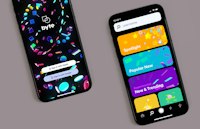Creating web applications has become more than just writing code. It’s an art, where every detail matters, especially when it comes to User Interface (UI) design. A performant and responsive UI is pivotal to user experience, ensuring users have a seamless interaction across different device screens. This blog post will guide you through creating fast and responsive UIs using modern development techniques.
Going the Extra Mile - Enhancing UI Performance
UI performance significantly influences user experience and engagement. As Tom L Jiang notes, “Every millisecond counts when you’re delivering an engaging user experience.” Hence, ensuring optimal UI performance is of utmost importance.
Lazy Loading: Making UI Faster and Smoother
Consider an ecommerce application with a vast product catalog. Loading all product images simultaneously can slow down your application. This is where Lazy Loading becomes an asset. It changes the traditional method of bulk data loading into segmented requests. Here is a code snippet from an open-source project react-lazyload that shows a basic implementation of lazy loading:
import React from 'react';
import LazyLoad from 'react-lazyload';
const MyComponent = () => (
<div>
<LazyLoad height={200} once >
<img src="huge_pic.jpg" alt=""/>
</LazyLoad>
</div>
);
export default MyComponent;
Here, the height attribute reserves the component’s space in the page layout, ensuring the structure doesn’t reflow once the actual content (image, in this case) is loaded.
Minimize DOM Manipulation: Keep the UI Smooth
Direct manipulation of the Document Object Model (DOM) is expensive as it causes layout recalculations and repaints. Virtual DOM-based libraries/frameworks like React can help reduce this cost.
Responsive Design: One Size Does Not Fit All
Considering the myriad of devices with varying screen sizes users can access web applications from, building a responsive UI is no longer a luxury, but a necessity. Jennifer Kyrnin, author of “Sams Teach Yourself Responsive Web Design in 24 Hours”, affirms, “Responsive design is all about creating web layouts that adapt to different screen sizes.”
Media Queries: Making Adaptability a Reality
Media queries allow for the customization of site presentation for specific devices and display characteristics. Below is a simple example:
@media screen and (min-width: 600px) {
.sidebar {
display: none;
}
}
This snippet hides the sidebar when the device' screen width is less than 600px, thus achieving a cleaner layout on smaller devices.
Responsive Images: Delivering the Right Size
Like media queries, responsive images adapt to the display characteristics of the device serving them. They play a vital role in reducing payload and improving load times – paramount for mobile devices on slower networks. An example of using responsive images with the srcset attribute:
<img srcset="elva-fairy-480w.jpg 480w,
elva-fairy-800w.jpg 800w"
sizes="(max-width: 600px) 480px,
800px"
src="elva-fairy-800w.jpg"
alt="Elva dressed as a fairy">
Pitfalls to Avoid
- Not prioritizing accessibility: UIs should be easily navigable for all users, including those with impairments. For instance, your color choices should cater to people with color blindness.
- Overcomplicating the UI: The purpose of a good UI is not to overawe users with fancy elements, but to facilitate easy navigation. Stick to simplicity.
Gotchas to Keep in Mind
- Variable network speeds: While optimizing performance, remember that not all users will have the same bandwidth. Loading a high-resolution image may work fine on a strong Wi-Fi network, but might lag on a slower 3G network.
- Browser inconsistencies: Different browsers may interpret code differently, potentially causing layout inconsistencies. Use tools like browser reset stylesheets to mitigate these effects.
By taking a user-centered approach, emphasizing optimization, and responsiveness, you can create a UI that brings true joy and value to your users. Happy coding!



